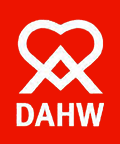This document covers “DAHW's Gender Equity Strategy”. It highlights our shared aims for gender equity to flourish at our head office, program offices, and clearly in programs, so that together we can establish an equal workplace for our employees and the communities we serve.
The Principle of DAHW’s Strategy on Gender Equity
In order to drive change on gender equity, this strategy establishes a set of minimum standards by which DAHW program offices and Staff will be held accountable for meetings, at all levels of the organization. We will measure our performance by these standards every year.
The Vision of DAHW’s Strategy on Gender Equity
DAHW believes that gender equity is central to achieving our vision for change: a world in which everyone, realize their full potential in societies that respect people’s rights and dignity. “DAHW’s Strategy on Gender Equity” puts this vision into action by achieving the following:
- DAHW’s work confronts gender inequality, gender-based violence and unequal power relations in our work and the communities we are engaged in, particularly those who are affected by leprosy and other health conditions.
- DAHW is successful in implementing high quality and long-term strategies of transformative social- change in our programs and health interventions which address the causes of gender-based exclusion and discrimination.
- DAHW’s work on gender equality is based on an inclusive workplace environment and organizational culture where gender equity thrives.
- We extend our influence in changing policies and practices of local and national governments to improve the lives of vulnerable groups specially women and those who are discriminated based on their health conditions.
Essential Concepts
- Incorporating Gender Equity: Both rights of women and vulnerable groups are equally important to DAHW. DAHW’s commitment to gender equity means that we partner with the communities we work in, people with disabilities, non-binary, queer communities and with women and men, to achieve equal rights and equal opportunities for all. Therefore, DAHW ensures that we promote gender equity in all our programs and across our offices and staff.
- Advancing Gender Equity: DAHW will also pursue specific programs of empowerment for vulnerable groups and women as agreed in the gender and inclusion survey to reduce gender gaps and help overcome gender-based inequality, discrimination, and injustice.
DAHW’s Strategy on Gender Equity: Four Areas
DAHW’s Gender Equity Strategy outlines DAHW’s commitment to strive for gender equality in four areas:
- Offices and Staff
- Programs
- Partnership
- Communications and Marketing
1. Offices and Staff
The DAHW headquarter, program offices, and strategic partners will have workplace policies that ensure equal opportunities for all employees including LGBTQIA+ and employees with disabilities. The staff will receive training on gender equity and equality to understand its core. Incorporate gender equity into staff work plans, as well as accountability and performance evaluations. In their annual budgets, each office will allocate sufficient funds to implement the gender equality plans.
In the workplace, in programs, and in communities, sexual harassment and gender discrimination will not be tolerated.
2. Programs
In terms of gender equity, program development will include an analysis of vulnerable groups, particularly women. The program will have gender equity-specific objectives, indicators, goals, and outcomes. All program data will be broken down by sex and age. DAHW will engage the community in a discussion about gender inequality and will negotiate solutions to existing injustices. This will be carried out in a manner that is respectful of local culture, does not result in open conflicts, does not expose anyone to damage, and adheres to the principle of "do no harm."
3. Partnership
DAHW will work in partnership with organizations that are committed to gender equity and equality and rights of vulnerable groups in our strategic
regions and countries and will provide partner organizations with assistance and training on promoting gender equity.
4. Communications and Marketing
All DAHW’s media and marketing messages and publications will reflect DAHW’s commitment to gender equity, inclusion of people with disabilities and vulnerable groups. We shall ensure that our messaging are gender-sensitive and do not denigrate girls, boys, men, women, or vulnerable groups or use offensive language or pictures.


